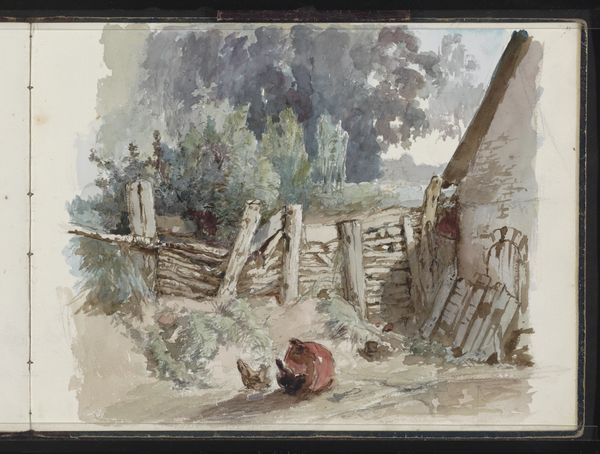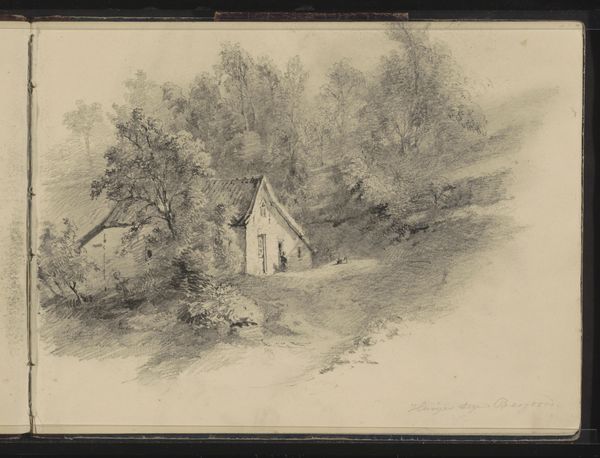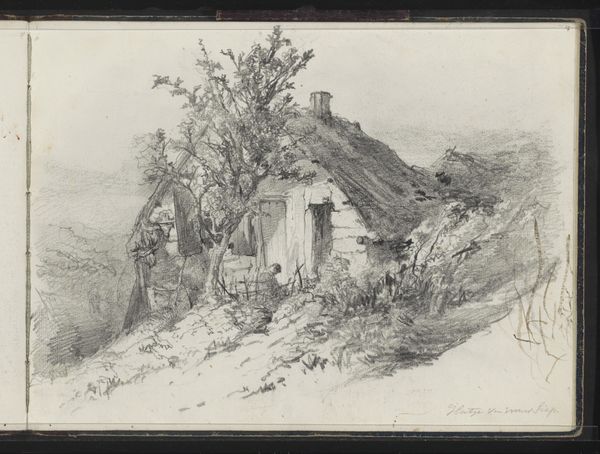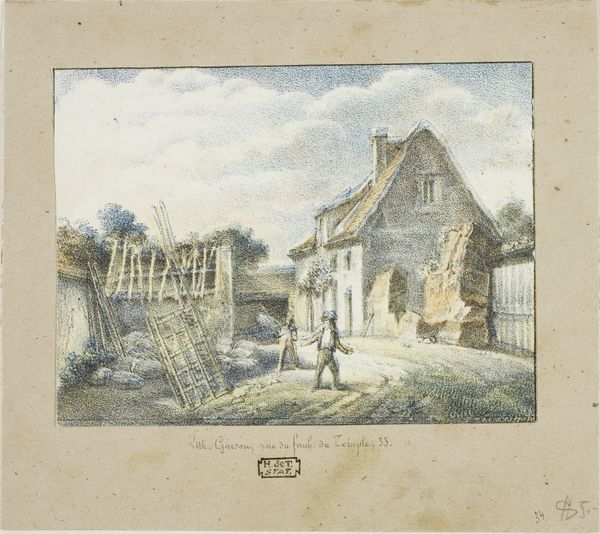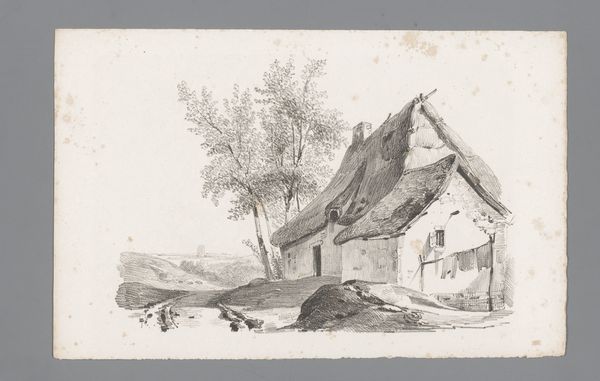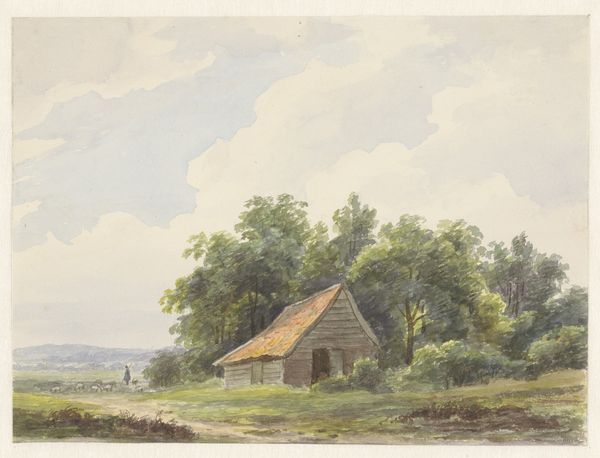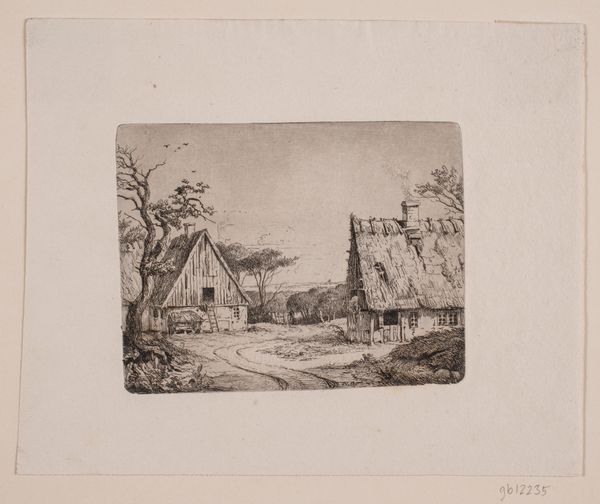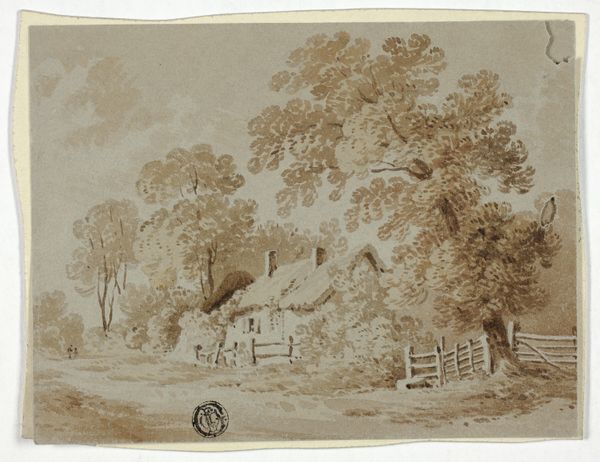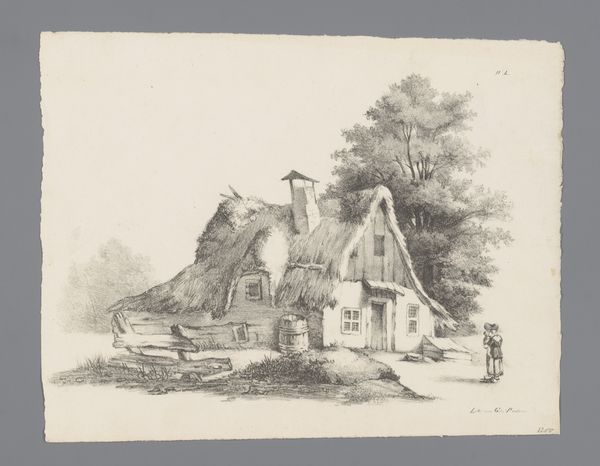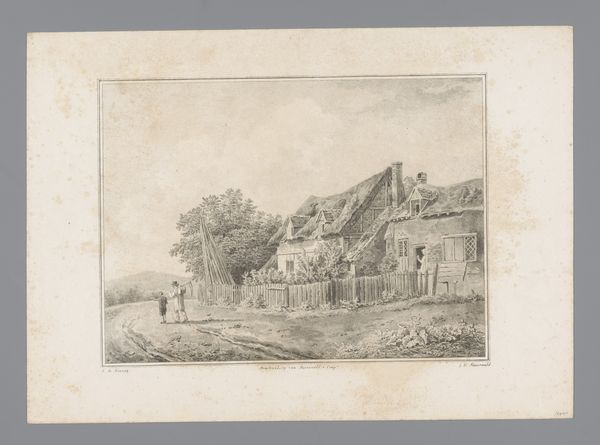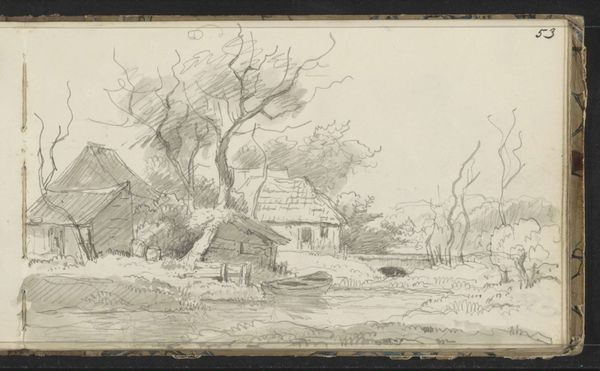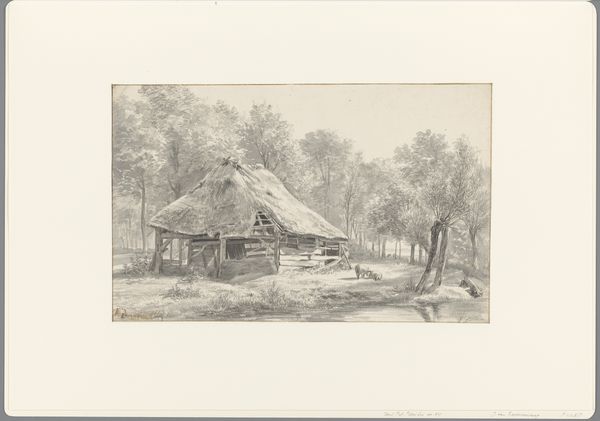
mixed-media, watercolor
#
mixed-media
#
impressionism
#
landscape
#
watercolor
#
coloured pencil
#
mixed medium
#
mixed media
#
watercolor
Copyright: Rijks Museum: Open Domain
Curator: Looking at this piece, titled "Boom voor een hut" – or "Tree in Front of a Hut" – dating from 1864-1865, and created using watercolor and colored pencil, I am immediately struck by a feeling of quiet intimacy. Editor: It’s immediately calming, isn't it? The washes of color feel gentle, almost faded, like looking at a cherished memory. It evokes a profound connection to the earth and simple living, perhaps idealized, but nonetheless powerful. The rustic hut anchors it, of course. Curator: Indeed. We know that Maria Vos, the artist, was working in a time of increasing industrialization and urbanization. Works like these, depicting rural landscapes, offered an escape from that reality. We can see in the use of such natural media, watercolor on paper, and subject matter choices the importance given to the non-urban environment in the collective Dutch conscience. Editor: Precisely. And let’s not ignore that those landscapes aren't neutral backdrops; they reflect deep socio-political tensions. The idealized countryside can sometimes serve to obscure the realities of rural labor and inequality. Does it provide a sort of escapism, yes. But from whose point of view? Which communities and workers are hidden by the art? Curator: A valid and important question. Vos seems to embrace a soft naturalism, a middle ground between social commentary and pure aesthetics. One must also consider the availability of artistic training to women at the time and where rural life factored into it as an allowable or preferred genre. The looser brushstrokes indicate some movement away from the very rigid style that typified early painting. Editor: True. I think exploring this through a contemporary lens makes this piece particularly relevant. Examining what the absence of farmhands may be, how their place has been purposefully omitted or glossed over. In fact, it is through their removal, a type of violence, that Vos' natural work creates meaning and perhaps reinforces stereotypes or at the very least dominant narratives about the Netherlands and country living at that time. Curator: By juxtaposing this pastoral image against the backdrop of industrialization and urbanization, it becomes a fascinating artifact for dissecting a broader cultural longing. It can allow us to reflect on ideas related to our contemporary environment issues and urban expansion that affect global dynamics today. Editor: Absolutely. Seeing artwork with historical understanding, through an intersectional approach gives a space where questions and challenges that concern global society become valuable. Curator: Well said. Thank you. Editor: Thank you, it's been very enlightening.
Comments
No comments
Be the first to comment and join the conversation on the ultimate creative platform.
